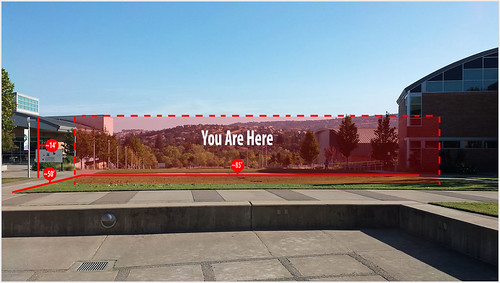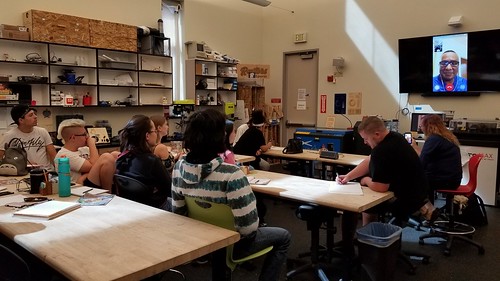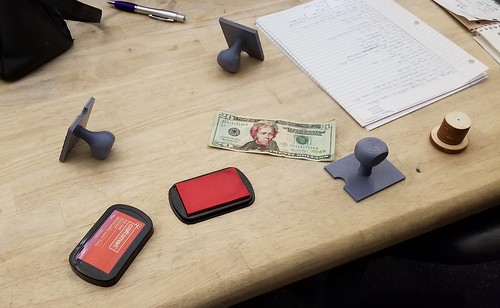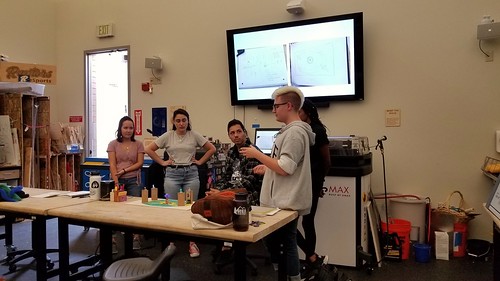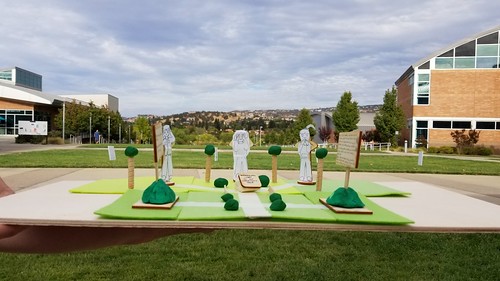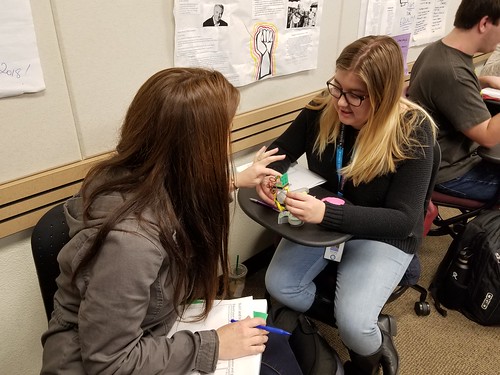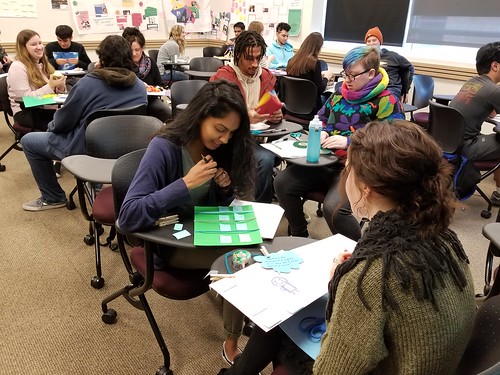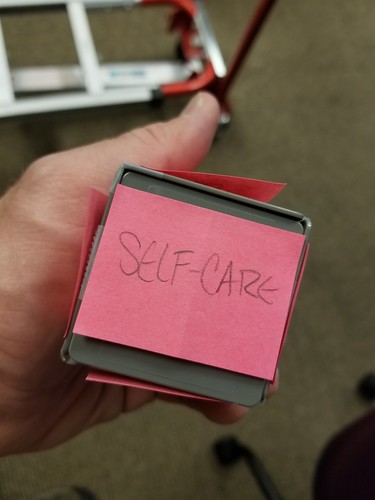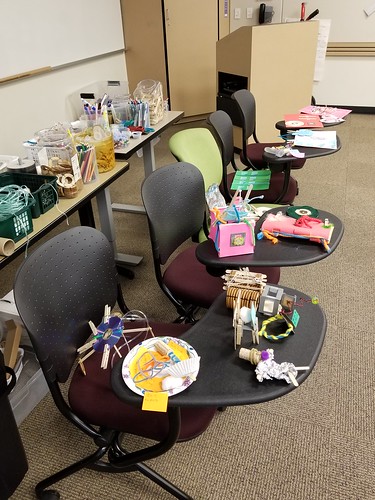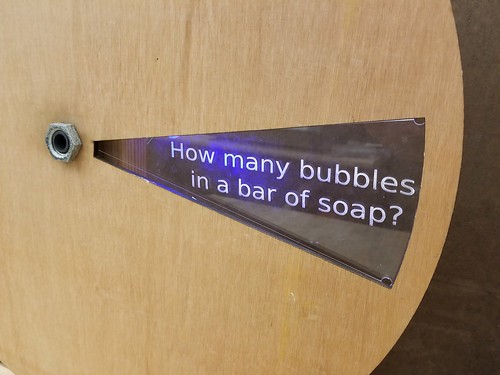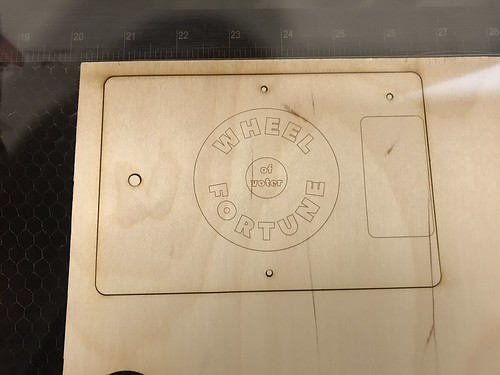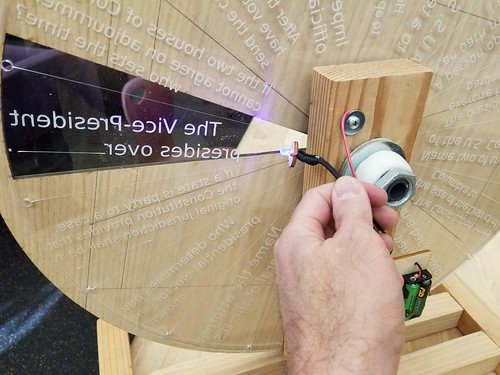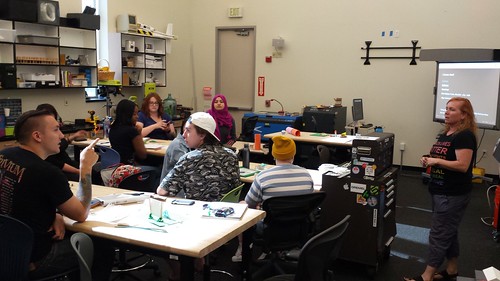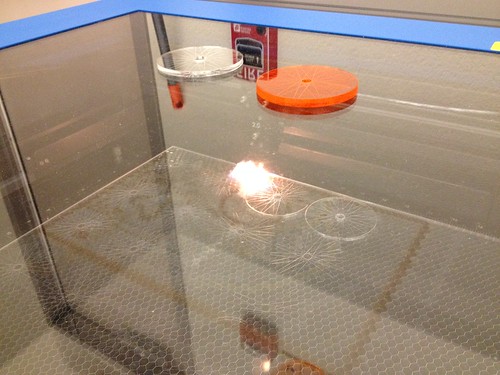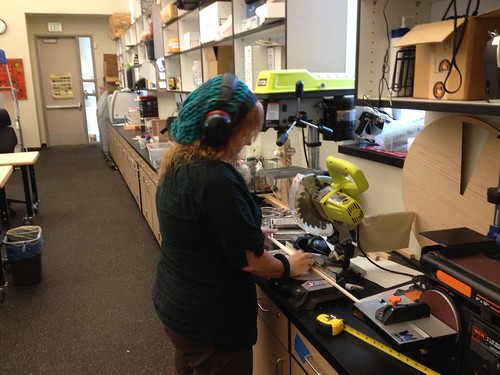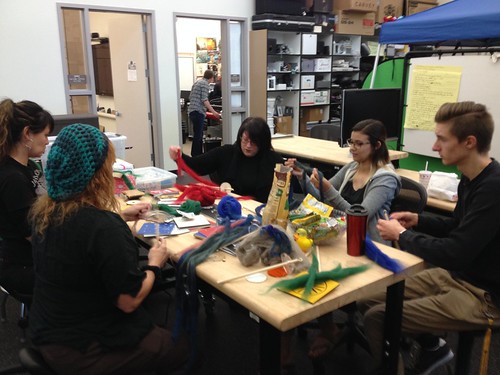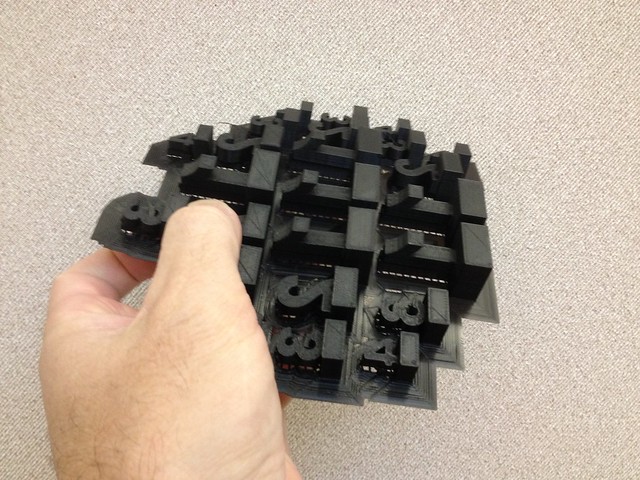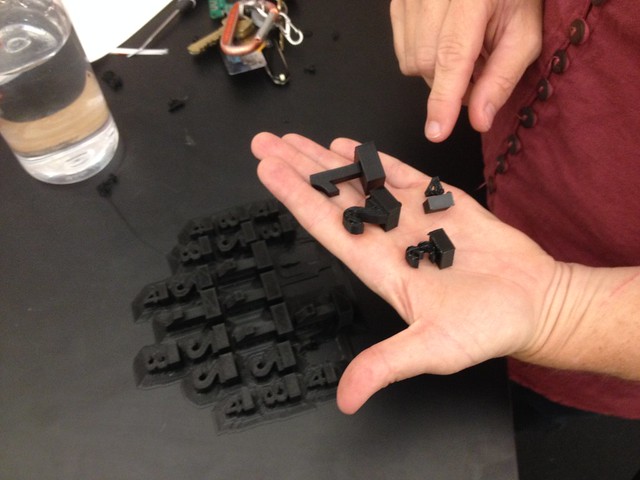We are here. Diane Carlson (Sociology) and I are co-teaching v2.0 of Making Social Change, a hands-on course at the intersection of making and Sociology, in which we explore social movements and the ways that they use tools to enact change. We teach the class in the makerspace, and we’re working with a brave cohort of interesting students. We’ve been tweaking and adapting the content, activities, and flow, building on what we learned offering a prototype of the course in fall of 2017.
So far, we’ve spoken with Ivan in South Africa, a friend of Diane’s and an ANC activist who fought against apartheid…
…worked with the laser cutter and 3D printer to create a Harriet Tubman stamp to perfect a twenty dollar bill…
…and discussed memory and monument, working through James W. Loewen’s ideas in Lies Across America…
…and creating prototypes for potential monuments to be built on our college campus.

